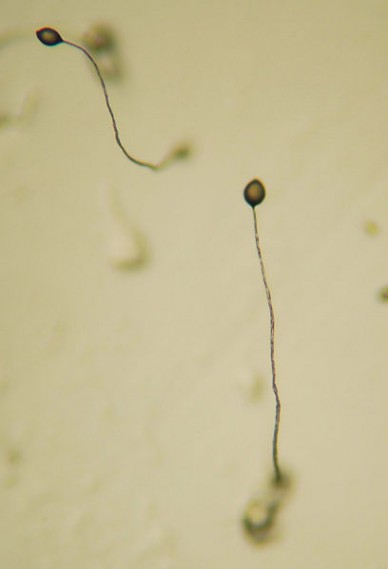
Dictyostelium discoideum, commonly known as slime mold, is a social amoeba: after living awhile as independent unicellular protozoans, individuals joins with their neighbors to form a motile slug-like mass. The amoeba consume their food, folic-acid-secreting bacteria, until the local supply runs out, and then they form a fruiting body: communicating chemically, cells differentiate to form a stalk and spore cells, which dry out, disperse, and turn into new amoeba upon landing in a suitable environment.
All this has been known for some time. Now, reporting in a Nature letter, Debra Brock and her colleagues in the Ecology and Evolutionary Biology Department at Rice University have discovered a new twist: the sporulating cells encapsulate specimens of their favorite bacteria, which the spores carry with them to their new environment to “seed” a fresh food supply for the new population. Brock calls this behavior a “primitive farming symbiosis that includes dispersal and prudent harvesting of the crop.” It’s an example of convergent evolution, in which several widely divergent species evolve similar adaptation. Familiar examples include wings in birds and bats, the aquatic adaptations of marine mammals and their dinosaur-age reptilian precursors�and among the massively social species, agriculture. Termites and ants do it; so do simpler organisms like marine snails that cultivate fungal beds in the tidal zone. And now it’s been found among some of the simplest social organisms known�creatures whose society is organized by a radically simple grammar of chemical activations. And yet agriculture appears emergently even in such modest sociability. �via National Geographic
 Gearfuse Technology, Science, Culture & More
Gearfuse Technology, Science, Culture & More

